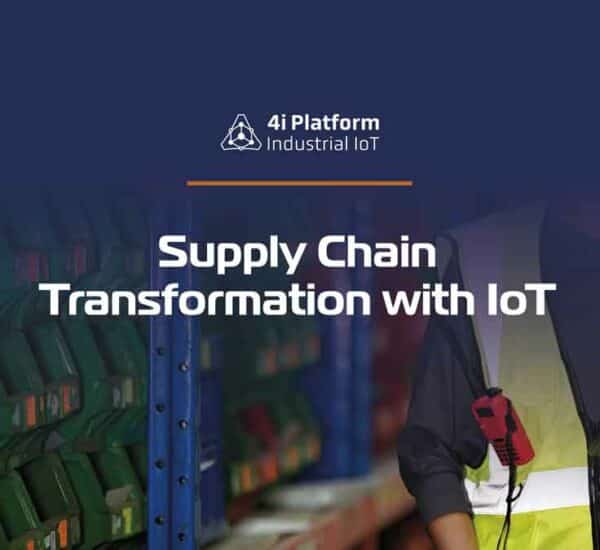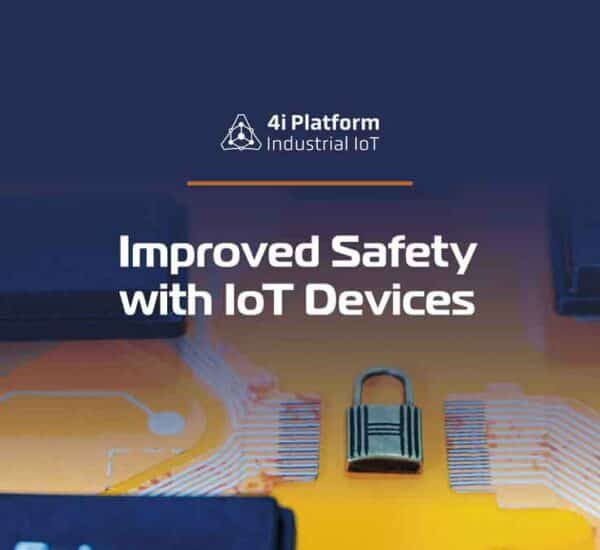An ever growing increase in mobile technology has created a fast-paced society that is accustomed to information on-the-go and instant feedback. As the breadth and depth of technology available increases, ensuring a protected Industrial IoT network is imperative.
For companies in the manufacturing and logistics sectors, the new era of instant demands can be met through more use of Industrial Internet of Things (IoT).
The Industrial Internet of Things involves the use of IoT technologies in manufacturing procedures and across supply chains. Alongside data from devices and sensors, Industrial IoT strategies should incorporate machine learning and large data technology, harnessing that combination of existing sensor data, machine to machine (M2M) communication and automation technology to offer more insight back into the business.
The potential of technology here is vast, with new advancements being developed all the time and at great speed.
Companies must therefore consider how best to adopt Industrial IoT as part of an ongoing plan to benefit the business. In turn, this level of insight can promote future business decisions and levels of success.
What advantages does industrial IoT bring?
Manufacturing enterprises generally have large quantities of industrial equipment, all of which needs maintaining. For existing deployments, Industrial IoT enables improvements in decisions around manufacturing procedures based on availability of accurate data.
In addition, it can also be employed to improve production quality and uptime, as the data gathered from devices and sensors on the network enables real-time and predictive maintenance across the estate.
The main idea behind Industrial IoT is that of making machines smarter and more efficient than humans at making decisions. This does rely accurately, consistently capturing and communicating data.
Companies within the market are now developing leading edge sensors which make highly accurate measurements. This data can be combined with real-time analytics that can explain how nicely machines are performing.
Using machine learning, the system can be trained to identify potential patterns that would indicate a future failure; if the results are concerning they can be investigated immediately.
This information would previously take weeks to discover and rely on the availability of skilled professionals at every site; now, the use of real-time data can help those with the right skills track more machines in numerous places, making decisions about maintenance faster. Subsequently, the efficiency of manufacturing can speed up considerably.
Alongside predictive maintenance, machine learning heavily lends itself to Industrial IoT around how to make advancements in performance. To make this work, companies need to make sense of all the data available, quantify it and provide insight to how best to carry on with their manufacturing procedures given the information received.
Overtime, machine learning can be used to demonstrate how to boost performance and provide faster results for the same degree of investment.
In manufacturing, time is money. With the implementation of Industrial IoT strategies — from individual sensors through to the analytics and automation available — manufacturers can make better business decisions around overall efficiency and prices.
Industrial IoT strategies also hold great potential for developments around sustainable and green manufacturing practices, and supply chain traceability.
With the growth of companies in the”circular economy”, where all components from products through to packaging should be fully reusable and recycled across the value chain, Industrial IoT implementations are going to be essential to tracking results.
Why security is crucial for Industrial IoT: The threats businesses should be aware of
Alongside implementing Industrial IoT systems to meet business requirements, companies should be aware of the safety implications too. Each Industrial IoT apparatus that joins a network becomes a potential point of entry for attackers, so the need for a safe network couldn’t be more critical as the amount of devices used proceeds to increase.
Attackers are getting more creative in how they try to access networks.
Anything with an IP connection should therefore be secured before being allowed on to the network. Each device needs to also have an upgrade and patching path, so that any flaws can be fixed.
In regards to information technology vs operational technology, there is currently a lack of established best practices. But it is well worth using some of the standard operating procedures for IT security around Industrial IoT management techniques as this approach provides a head start to securing networks. These management tools must be treated as though they are attack vectors so as to keep networks safe.
There are eight components of safety required at the edge of an Industrial IoT system, to ensure that the whole system remains protected against attack:
1. Authentication — anyone that requires access to a network has to be authorized. Implementing an authentication strategy with role-based access control and auditing to track who is allowed to join the network, and if those accounts are used, is therefore an essential part of your IT infrastructure strategy.
2. Encryption — to have control over data being shared from devices back into the central application, encryption is required. However, this encryption should not affect the speed at which the data is processed adversely.
3. Transmission — the transport mechanism for getting data from devices from 1 device to another, or to central systems, should be considered. Will apparatus be on a wired company community, or will they be transmitting data over wireless networks?
For logistics and supply chain companies, use of telecoms networks to track vehicles may be necessary. The method of transport whether wired or wireless should be protected and flexible to upgrade to latest communication protocols.
4. Tamper security — this step ensures that gear is monitored and checked to see if it has been tampered with. This can be a combination of mechanical, hardware and software tamper detection.
5. Data storage — all data storage has to be protected. Data is often being stored at the edge and can maintain critical system data such as operating software. Additionally, within the life cycle of equipment, memory expansion is quite likely and has to be executed with no loss of safety integrity. Similarly, the central collection of data also needs security, as it forms a critical business asset.
6. Over the air software upgrade — the lifespan of industrial gear varies and often has to be updated. An Industrial IoT program needs to be able to do over-the-air updates in a safe way.
7. Segmentation — flat network structures are most widely utilized in production environments and any flaw in a device can spread and effect the entire network. Segmentation is therefore used in operational technology to keep the attack surfaces small and decrease this risk.
8. Multi-layering — Operational technologies can’t be easily patched and so Industrial IoT often sits above the operational technologies network and is operated in a separate network layer; this then communicates with data aggregation and an analytics layer to secure a community.
As additional sensors and gateways communicating to IT infrastructures outside the network eventually become threats, security in layers such as this is used to protect the production environments.





